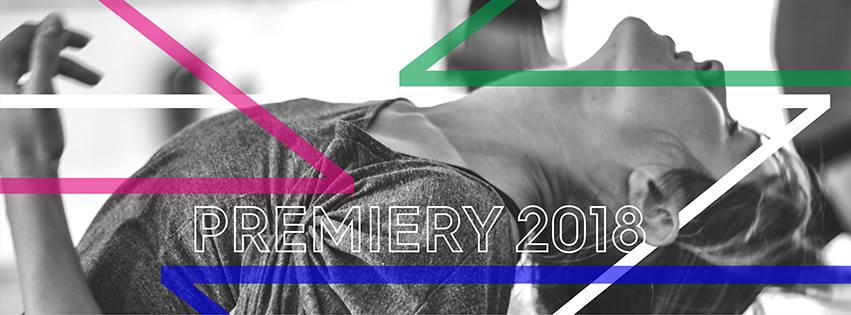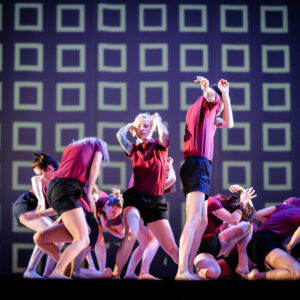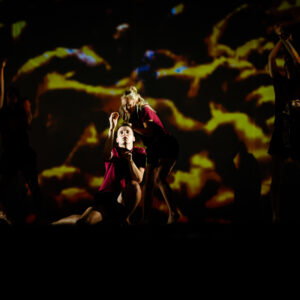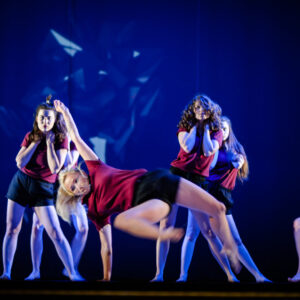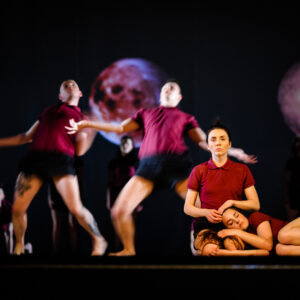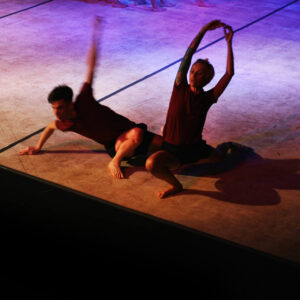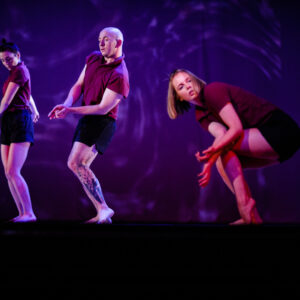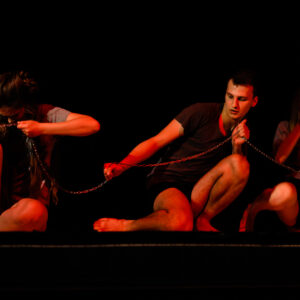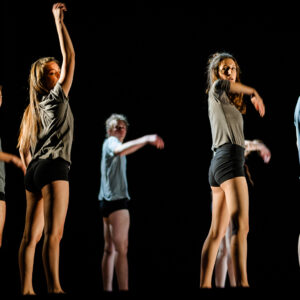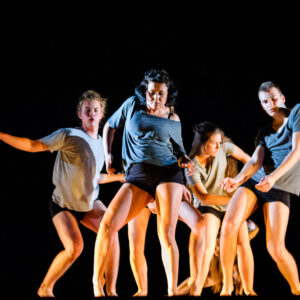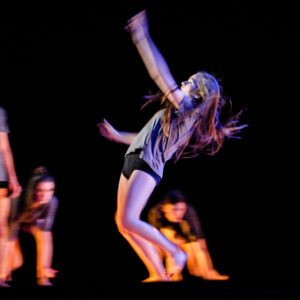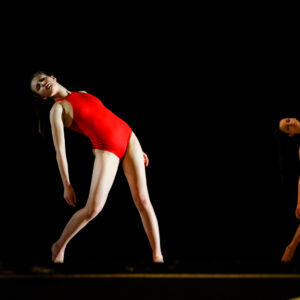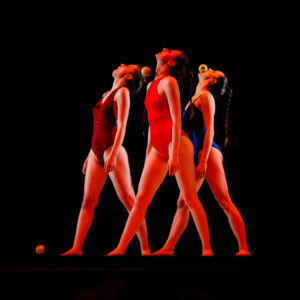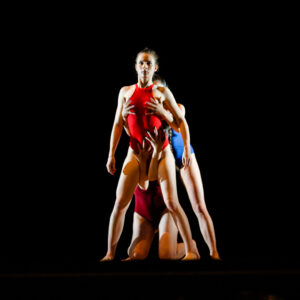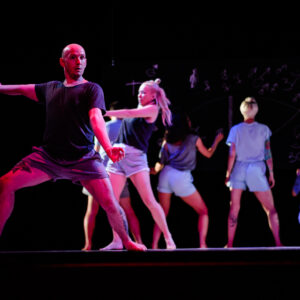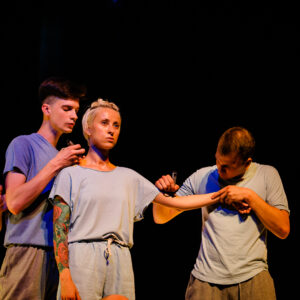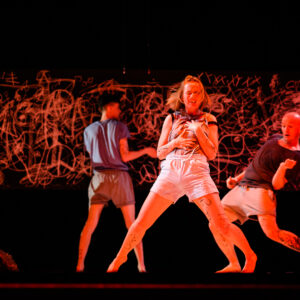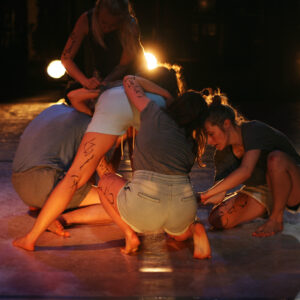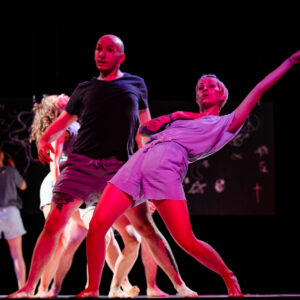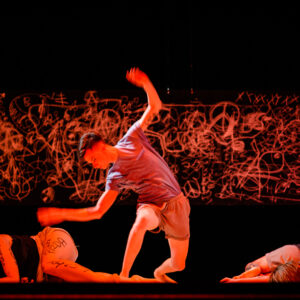Zielona Góra - a place where talented dancers create
The premiere evening, organized by Pracownia Teatr Tańca in Zielona Góra in May 2018, is an event that satisfies both viewers who expect great dancing and those who need intellectual reflection.
The studio of the Dance Theater from Zielona Góra is one of my discoveries this year. I have been interested in dance for several years, I watch performances of various kinds (ballet, dance theater, contemporary dance), go to festivals - but all the time these are events mainly presented in larger cities, bands and artists known in Poland and often appearing in the programs of important national dance events. Until recently, there were no smaller centers on my dance map (apart from Połczyn, which I found out about at one of the major festivals), and thus no teams working in them.
This year, a proposal was made to go to Zielona Góra - which I always associate only with the drama theater, in which I have only been to once in my life. This trip showed me how many young people work in various places in Poland, although popular media outlets do not talk about them. He showed that Zielona Góra is a place where very interesting proposals are created, where you can develop passions in the field of movement. The premiere evening, proposed by Pracownia Teatr Teatr Tańca, is comprised of four various proposals at a high artistic level, with interesting topics and resources.
At the beginning, the audience in Zielona Góra was offered "Stamina". It is a very interesting combination of movement, sound and visual composition. The communal experience is definitely in the foreground here - we have a group in front of us that experiences various kinds of states. Marek Debłużny and his team provoke the viewer to consider situations in which we do not feel comfortable. You can see it in motion - the dancers move smoothly from standing positions to the ground floor, although at times it may seem that impulses pass through their bodies like electric shocks, preventing them from functioning peacefully. This is a very interesting strategy used by the team - crisis states, extreme for humans, have been shown by decisive and quite violent movements, although common to everyone,however, it is presented individually by each of the dancers. In combination with geometric visualizations, they create a structure that is associated with uncertainty, but also with searching, entering a new state. The moments when the ensemble - dressed uniformly - move more gently, like one organism marks its presence in space, are also great. In the stage structure created by the team from Zielona Góra, I see a certain dependence - building a certain coherent whole and deconstructing it precisely by presenting critical states. "Stamina" is a kind of search for a way to deal with a crisis, going through various emotions, shown through perfectly guided movement.but also with searching, entering a new state. The moments when the ensemble - dressed uniformly - move more gently, like one organism marks its presence in space, are also great. In the stage structure created by the team from Zielona Góra, I see a certain dependence - building a certain coherent whole and deconstructing it precisely by presenting critical states. "Stamina" is a kind of search for a way to deal with a crisis, going through various emotions, shown through perfectly guided movement.but also with searching, entering a new state. The moments when the ensemble - dressed uniformly - move more gently, like one organism marks its presence in space, are also great. In the stage structure created by the team from Zielona Góra, I see a certain dependence - building a certain coherent whole and deconstructing it precisely by presenting critical states. "Stamina" is a kind of search for a way to deal with a crisis, going through various emotions, shown through perfectly guided movement.In the stage structure created by the team from Zielona Góra, I see a certain dependence - building a certain coherent whole and deconstructing it precisely by presenting critical states. "Stamina" is a kind of search for a way to deal with a crisis, going through various emotions, shown through perfectly guided movement.In the stage structure created by the team from Zielona Góra, I see a certain dependence - building a certain coherent whole and deconstructing it precisely by presenting critical states. "Stamina" is a kind of search for a way to deal with a crisis, going through various emotions, shown through perfectly guided movement.
The longest presentation of the Dance Theater Studio opened the evening, during which two more works of the ensemble were shown. In "| Un | Chain", he strikes primarily with very well-coordinated teamwork, but also with greater austerity of form than "Stamina". It is influenced by the colors used by the team, but also by greater slowdowns and subtleties in the movement, which was presented by the students of the Dance Theater Studio. On the other hand, in "9.81" greater tensions became visible again, anxiety and doubts tormenting the human body. It is in this work that I perceive the most individualism in the movement of each of the dancers - there are moments when you can see the relations between the dancers, sometimes based on distance, sometimes on building a common structure of a given sequence. Puzzlingthat also in this performance, movement is perfectly combined with visual elements. However, there are no complicated visualizations, but a very simple operation - the human body is marked by writing on it, the words appearing on the hands or legs of the performers are nothing but meanings assigned to them that cannot be changed. It is, in a way, a situation of oppression, a critical state for the human organism that cannot free itself from the term imposed on it. Interestingly, the dancers on the back wall of the stage also created an image composed of lines, geometric shapes, random strokes, as if they wanted to show that the entire space in which we move on a daily basis is codified, composed of specific, often stereotypical thoughts and judgments.but a very simple procedure - the human body is marked by writing on it, the words appearing on the hands or legs of the performers are nothing but meanings assigned to them that cannot be changed. It is, in a way, a situation of oppression, a critical state for the human organism that cannot free itself from the term imposed on it. Interestingly, the dancers on the back wall of the stage also created an image composed of lines, geometric shapes, random strokes, as if they wanted to show that the entire space in which we move every day is codified, composed of specific, often stereotypical thoughts and judgments.but a very simple procedure - the human body is marked by writing on it, the words appearing on the hands or legs of performers are nothing but meanings assigned to them that cannot be changed. It is, in a way, a situation of oppression, a critical state for the human organism that cannot free itself from the term imposed on it. Interestingly, the dancers on the back wall of the stage also created an image composed of lines, geometric shapes, random strokes, as if they wanted to show that the entire space in which we move on a daily basis is codified, composed of specific, often stereotypical thoughts and judgments.a critical state for the human organism that cannot free itself from the definition imposed on it. Interestingly, the dancers on the back wall of the stage also created an image composed of lines, geometric shapes, random strokes, as if they wanted to show that the entire space in which we move on a daily basis is codified, composed of specific, often stereotypical thoughts and judgments.a critical state for the human organism that cannot free itself from the definition imposed on it. Interestingly, the dancers on the back wall of the stage also created an image composed of lines, geometric shapes, random strokes, as if they wanted to show that the entire space in which we move on a daily basis is codified, composed of specific, often stereotypical thoughts and judgments.
A very big advantage of the Zielona Góra evening was the enrichment of the presentation of the Dance Theater Studio with the work of the invited guests - the Enza Dance Theater from Słupsk. It is a smaller team than the one with whom Marek Zadłużny works on a daily basis, but Gabriela Keller-Janus led her dancers perfectly. In Debłużny's work, a certain language of movement is visible, based on minimalism and a firmly embedded group structure, as well as taking as a starting point psychological factors and emotional states of a human being. With Keller-Janus it is a bit different - the starting point for creating "The End of Contemplation" was the work of Rene Margitte. The surreal paintings of the Belgian painter are reflected in individual movement sequences. Initially it is a bit dark, we only see one dancer wearing a shirt and jacket,reminiscent of Margitte's "Son of Man". Then two more join it, each of them moving in a different way, seemingly only seemingly random - in fact, you can see a fully codified choreography based on gentle hand movements and sweeping space. Once all three dancers are facing the audience, they take off their shirts and jackets and only wear plain colored bathing suits. The movements they make in this version are minimalist, but only with time become dynamic. An interesting solution is also a certain deconstruction - when two of the dancers perform the same choreography, the third one moves completely differently, as if it were against the imposed codification. Even though their bodies are highly exposed in space, there is nothing vulgar about it,on the contrary, we see specific and decisive women highlighting their individualism. Finally, the reference to the aforementioned Margitte's painting appears again, as the dancers move with green apples in their mouths. This is a very clear reference to the painter's work, showing the absurdity of human behavior. Through this performance, you can see that the Enza Dance Theater presents a different perspective on dance than Pracownia Teatr Teatr Tańca, but the combination of such expressive groups during one evening definitely gives satisfaction and faith that dance in Poland is developing - not only in central centers.This is a very clear reference to the painter's work, showing the absurdity of human behavior. Through this performance, you can see that the Enza Dance Theater presents a different perspective on dance than Pracownia Teatr Teatr Tańca, but the combination of such expressive groups during one evening definitely gives satisfaction and faith that dance in Poland is developing - not only in central centers.This is a very clear reference to the painter's work, showing the absurdity of human behavior. Through this performance, you can see that the Enza Dance Theater presents a different perspective on dance than Pracownia Teatr Teatr Tańca, however, the combination of such expressive groups during one evening definitely gives satisfaction and faith that dance in Poland is developing - not only in central centers.
Dance Theater Studio
"Stamina"
Direction and choreography: Marek Zadłużny and the team
Visualizations: Joanna Fuczko
Cast: Agnieszka Jodłowska, Magdalena Bębenek, Kalina Grupa, Kinga Górska, Natalia Zaleszczak, Julita Polańska, Martyna Blachowska, Agata Kierońska, Marek Zadłużny, Radosław Bajon, Gabriel Zaborniak
Dance Theater Studio_adepts
"| Un | Chain"
Choreography: Marek Zadłużny
Cast: Agata Hałubicka, Katarzyna Mądry, Weronika Kędzierska, Julia Perzyńska, Aneta Gruszeczka, Radosław Bajon, Gabriel Zaborniak, Kacper Rampold
Enza Dance Theater
"End of contemplation"
Choreography: Gabriela Keller-Janus with her team
Cast: Martyna Majewska, Klaudia Janus, Wiktoria Banaszewska, Agnieszka Kowalczys
Dance Theater Studio
"9.81"
Choreography: Marek Zadłużny
Cast: Agnieszka Jodłowska, Magdalena Bębenek, Kalina Grupa, Kinga Górska, Natalia Zaleszczak, Martyna Blachowska, Marek Zadłużny, Radosław Bajon, Gabriel Zaborniak
Marta Seredyńska
November 2, 2018
